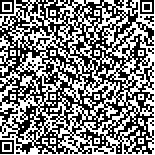苏敏,韩立影,杨卫新,张红兵,昝云强.经颅磁刺激在脑卒中患者上肢功能康复疗效评估中的应用[J].中华物理医学与康复杂志,2016,38(3):175-179
扫码阅读全文

|
| 经颅磁刺激在脑卒中患者上肢功能康复疗效评估中的应用 |
|
| |
| DOI: |
| 中文关键词: 经颅磁刺激 脑卒中 上肢运动功能 大脑皮质兴奋性 |
| 英文关键词: Transcranial magnetic stimulation Stroke Upper limb movement function Cortical excitability |
| 基金项目:国家自然科学基金青年项目(81301059);苏州市应用基础研究计划(SYS201221) |
|
| 摘要点击次数: 4027 |
| 全文下载次数: 7052 |
| 中文摘要: |
| 目的利用经颅磁刺激(TMS)技术评估脑卒中患者瘫痪上肢运动功能恢复情况以及患者大脑皮质兴奋性改变,从电生理角度评估患者预后并指导康复治疗。 方法选取早期脑卒中患者46例,根据病灶侧脑区TMS检查结果,将运动诱发电位(MEP)波幅低于50μV的患者归入运动诱发实验阴性组(阴性组),MEP波幅达到或超过50μV的患者则归入运动诱发实验阳性组(阳性组)。2组患者均给予相同的药物及康复训练。分别于治疗前、治疗2周、4周及8周时采用Fugl-Meyer运动功能量表(FMA)评定2组患者偏瘫侧上肢运动功能恢复情况,同时采用TMS检查2组患者健侧脑区运动皮质静息阈值(RMT)、MEP波幅(Amp)、皮质潜伏期(CL)和中枢运动传导时间(CMCT)等。 结果治疗4周时,阳性组患者上肢FMA评分为(54.99±2.76)分,明显高于治疗前水平(P<0.05),同时亦高于阴性组水平(P<0.05);治疗8周时,阳性组患者上肢FMA评分[(73.11±2.98)分]进一步提高,同时亦显著高于阴性组水平(P<0.05);治疗后2组患者健侧脑区运动皮质RMT均呈渐进性降低趋势,阴性组RMT从(98.35±10.12)%下降至(30.35±7.31)%,下降幅度及下降速度均明显超过阳性组水平(P<0.05);治疗后2组患者Amp均呈渐进性增高趋势,并且阳性组Amp开始增加时间点早于阴性组,但在Amp增加幅度方面2组间差异无统计学意义(P>0.05);此外治疗后阴性组CL及CMCT均较治疗前明显缩短(P<0.05),而阳性组CL及CMCT治疗前、后差异均无统计学意义(P>0.05)。 结论脑卒中患者健侧脑区运动皮质兴奋性呈动态变化过程,通过TMS分析其MEP特点有助于早期预测及评估脑卒中患者瘫痪上肢运动功能恢复情况,对科学制订康复干预方案具有重要作用。 |
| 英文摘要: |
| Objective To evaluate the effect of the transcranial magnetic stimulation on upper-extremity function rehabilitation and changes in the excitability of cerebral cortex, and to evaluate from the viewpoint of electrophysiology the prognosis so as to guide the rehabilitation treatment of patients after stroke. MethodsForty-six patients in the early stage after a stroke were given TMS examinations of the ipsilateral brain region. Those with the motor evoked potentials (MEPs) amplitudes lower than 50 μV were classified into a motion-induced experimental negative group (the negative group), while those whose MEP amplitude reached 50 μV or more were classified as movement-induced positive (the positive group). Both groups were given the same treatment. Before and after 2, 4 and 8 weeks of treatment the Fugl-Meyer movement function rating scale was used to assess their bilateral upper limb movement function. TMS technology was used to detect any change in the resting motor threshold (RMT) and the amplitude (Amp) of MEPs in the motor cortex. The incubation period of the cortex (CL) and the central motor conduction time (CMCT) in the contralateral motor cerebral cortex were also observed. ResultsAfter 4 weeks of treatment, the average score of the positive group on Fugl-Meyer upper movement function rating scale reached (54.99±2.76), significantly higher than before treatment and significantly higher than the negative group′s average (P<0.05). After 8 weeks of treatment, the average score in the positive group had increased further to 73.11±2.98, still significantly higher than that of the negative group (P<0.01). After treatment, RMT decreased progressively in both groups, but that of the negative group dropped from (98.35±10.12) to (30.35±7.31) (P<0.01), with significantly greater decline in amplitude and rate than that of the positive group (P<0.05). After treatment, the Amp of both groups showed a gradual increasing trend. Amp increased earlier in the positive group, but there was no significant difference in the extent of the increase between the two groups (P>0.05). After the treatment the CL and CMCT had shortened significantly in the negative group compared to before the treatment (P<0.05), while there was no significant change in CL and CMCT after the treatment (P>0.05). ConclusionsThe excitability of the contralateral motor cortex changes after a stroke. TMS can be used to characterize the MEP to monitor and predict recovery. This should help clinicians prepare more scientific rehabilitation plans. |
|
查看全文
查看/发表评论 下载PDF阅读器 |
| 关闭 |